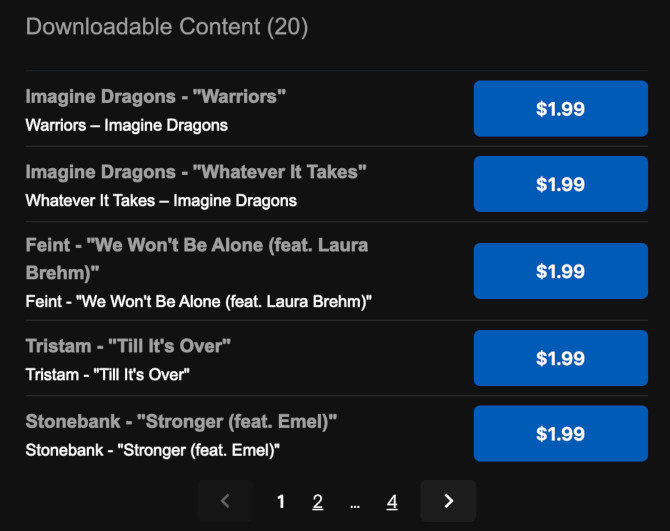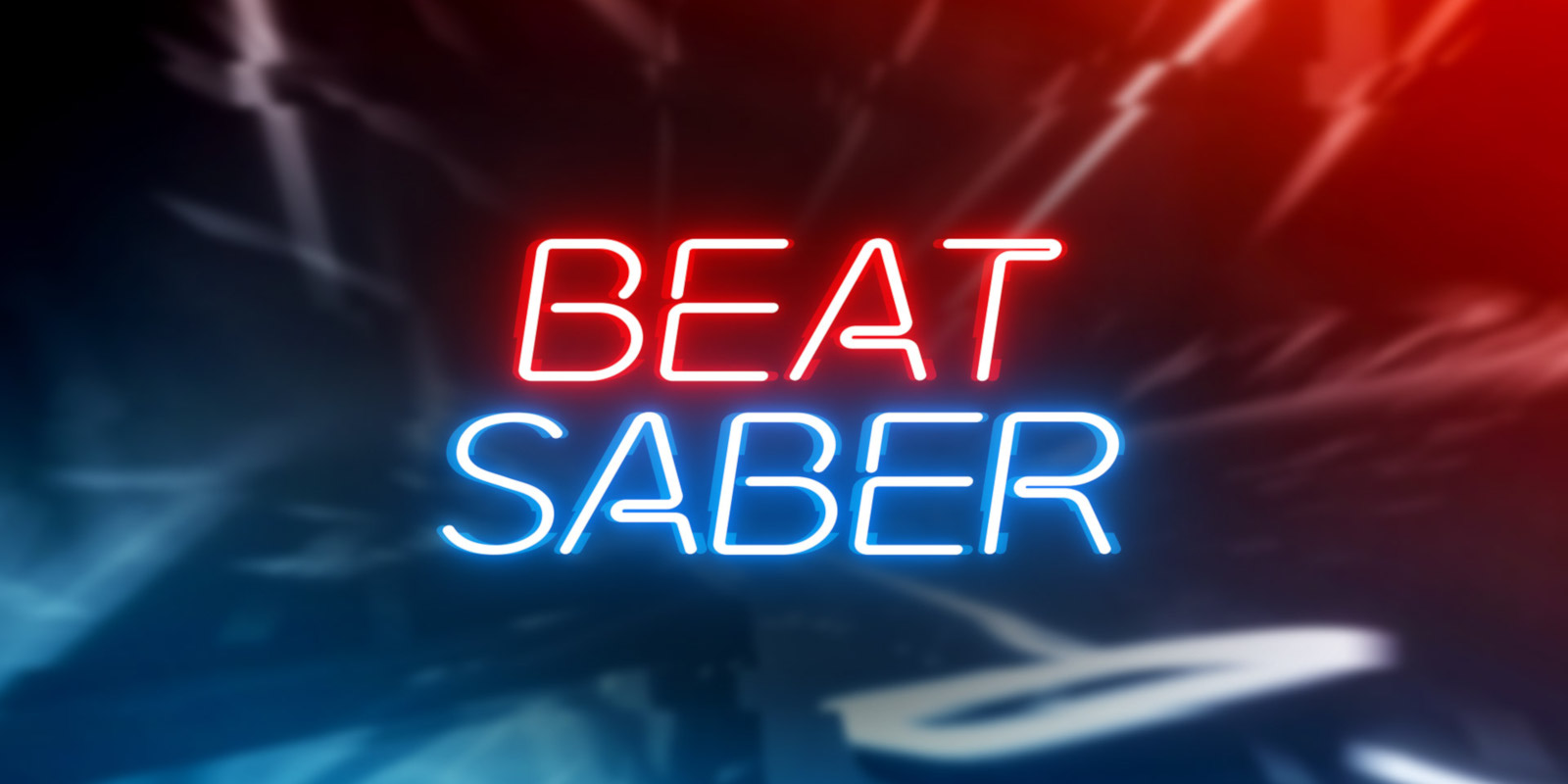This review is based on the Oculus Quest version of Beat Saber and may not reflect the same experience on other gaming platforms.
I don't really like rhythm games.
It's not like I haven't played many of them. My history with rhythm games includes: PaRappa the Rapper (PSX), Guitar Hero (various), Rock Band (various), Just Dance (various), Elite Beat Agents (Nintendo DS), StepMania (Windows), Osu! (Windows), Soundodger+ (Windows), and, of course, Dance Dance Revolution (and Pump It Up, which is even better).
And it's not like I'm utterly terrible, either. I've never dedicated enough time to beat the insane difficulties of any rhythm game, but I'm often skilled enough to reach the harder levels within a few hours of practice. All rhythm games, after all, boil down to the same core mechanic: rhythm.
So why don't I like them? The mindless repetition. Once you hit your plateau on certain songs, you're stuck—and the only way up is to play the same songs on repeat until you make minor breakthroughs. The scoring mechanics also encourage mindless repetition: until you can play a song without making a single mistake, you may as well play it again.
Yet, Beat Saber is different.
The Good
Beat Saber's gameplay is simple but extremely clever: you stand in one spot with two handheld lightsabers—one red, one blue—and you have to slice colored blocks—also red and blue—as they fly toward you, using the respective lightsaber according to the block's color.
Here's the twist: Each block has a directional indicator that shows which way you need to slice it in order for it to count. Some blocks slice upward, others slice inward, and the blocks can be rotated so that, really, you might have to slice it from any direction. Furthermore, there are four "lanes" in which blocks can come, and blocks can spawn at any height—from ground level to reach-over-your-head level.
This results in a kind of emergent gameplay where beatmappers (those who create block patterns for songs) can force you to move your body in specific ways simply by creating a particular pattern of blocks. It's way more intuitive than, say, Just Dance, where deciphering what movement the game wants you to do can be really hard at a glance. In Beat Saber, the player's learning curve is super shallow—it's the responsibility of the beatmappers to come up with creative movements for the players. And what an ocean of possibilities! The variety of "dance moves" that can be achieved by this simple block system is enormous, and you only have to watch a few YouTube videos to get a sense of how creative it can be.
It all comes together thanks to the visuals in Beat Saber, which are distinct, vibrant, and gorgeous. The game uses neon lights for important gameplay elements (namely the lightsabers and the blocks), muted colors for background elements (like the score), and blackness for everything else. The hardest part is training your brain's ability to read the directional indicators on blocks at a glance. Once you can do that, Beat Saber transforms into an almost zen-like experience where find your arms and body attacking blocks before you even consciously register them.
I love the minimal controls in Beat Saber. Slashing a saber is a million times more engaging than stepping on a button, pressing a key, or drawing with a stylus. The saber movements are responsive—slicing just as quickly as you do with your hands—and the controllers rumble whenever you hit a block. That tiny bit of haptic feedback feels surprisingly good, as you know right away whether your swing connected or failed.
Beat Saber is the only rhythm game I actually enjoy, and I'm itching to play it even now as I write this review. What makes it different from all the other rhythm games? Dual-handed gameplay; you aren't just pressing buttons or making vague movements, but attacking three-dimensional patterns; and it doesn't get stale. Rhythm games are built for mindless repetition, but whereas the repetition in other rhythm games feel empty, Beat Saber feels meaningful. It gets you moving, yes, but it's more than just exercise—it's a full-body experience that, honestly, feels like art.
The Bad
Beat Saber only comes with 19 songs: ten songs in Original Soundtrack I, five songs in Original Soundtrack II, and then four songs in Extras. Each song has multiple beatmaps for varying skill levels, so in that sense there are more than just 19 "stages"—but even so, rhythm games thrive on musical variety, and the base collection of 19 songs is downright pitiful.
It wouldn't be a huge deal if the game were cheap or free, but it costs an absurdly steep $30 in the Oculus Store. And no cross-buy: if you bought Beat Saber for Oculus Rift then decide to adopt the Oculus Quest, you have to buy it again at full price. What a racket!

As if that weren't bad enough, Beat Games is releasing additional songs as paid DLC. Beat Saber is already one of the most expensive games in the Oculus Store, but instead of building up their pitiful library of base songs, they're being greedy at $1.99 per track. Compare that to Dance Central, which is the same price as Beat Saber but comes with 32 songs and supports cross-buy, so you only have to buy once to play on both Oculus Rift and Oculus Quest. Come on, Beat Games. Get it together.
Yes, I'm aware that custom songs can be loaded into Beat Saber. Let's talk about that, shall we?
The Verdict
Beat Saber's saving grace—and the only reason why it gets an A grade rather than a D grade—is that you can install beatmaps for custom songs through sideloading and modding. Were it not for this, it would absolutely NOT be worth the price tag of admission. Too bad most casual users of the Oculus Quest don't know the first thing about how to sideload.
The problem is, the base game itself should support custom beatmaps. I shouldn't have to jump through hoops with third-party solutions to make up for an artificial shortfall imposed by the developers. It's sad that a game with such an awesome concept and execution is hampered by such decisions, and it leaves a very sour taste in the mouth. If Beat Games ever takes away the ability to install custom beatmaps, there will be hell to pay!
Overall, Beat Saber is great and I play it every day. I recommend grabbing some Oculus Quest grip covers to help prevent the battery covers from slipping off during intense songs.
Beat Saber
Beat SaberThe Good
- Active gameplay that gets your heart going
- Smooth, accurate, and responsive controls
- Feel like a badass wielding dual swords
The Bad
- Only comes with 19 songs that all sound too similar
- DLC purchases required to add more songs
- No cross-buy between platforms
